Health Data Toolkit
The DHIS2 Health Data Toolkit is a collection of implementation tools and resources developed in collaboration with WHO, UNICEF, CDC and other global health partners to improve the quality and effective use of integrated health information systems at national scale.
Jump to a section on this page
About the DHIS2 Health Data Toolkit
Developed in collaboration with WHO, UNICEF, CDC and other global health partners, the DHIS2 Health Data Toolkit is a set of curated resources for implementing DHIS2 for common public health use cases. These resources and tools are developed to support integrated health information system architectures, accelerate country implementation and improve the quality of national systems. A variety of resources include system design & configuration guides, software feature descriptions, tailored training materials, user guides, custom DHIS2 applications and reference metadata.
The toolkit brings together WHO data standards with UiO’s evidence-based system design principles and implementation lessons to help countries leap-frog into an era of digital information at their fingertips.
Try the Demo
Explore our interactive demo: demos.dhis2.org/hmis
The DHIS2 HMIS demo is tailored to promote principles for integrated health information system design and showcase data analysis products based on global guidelines and recommendations from subject matter experts. Here you can find dashboards, indicators, data entry forms, Tracker programs and custom apps in one harmonized space. Demo log-in details are available by language on the demo landing page at the link above.

Integrated health management information systems (HMIS)
The HISP Centre has promoted integrated, sustainable health information system (HIS) design since the inception of DHIS2 as a district-focused health information management software. As a WHO Collaborating Centre for Innovation and Implementation Research in HIS strengthening, we continue to work closely with countries and partners to learn from Ministries of Health and local innovations to develop best practices for integrated information system design. HISP Centre’s action research approach is deeply embedded in understanding data use practices and supporting data analysis and use at all levels of the health system.
Common Metadata Library for HIS
One key advantage of DHIS2 is that it can be used for multiple health programs, within a single, harmonized instance. There are several practical reasons to share metadata across health programs and case-based trackers or electronic registries: to reduce duplication of data entry and improve data flows, to share metadata and data between programs for improved analyses, and to to facilitate maintenance of metadata in the system.
Common HIS metadata includes core concepts like indicator types, reusable data elements for population data, as well as a set of common Tracker metadata to re-use across case surveillance and person-centered monitoring tracker programs.
The common HIS metadata library is the perfect jump-start to your DHIS2 implementation and can be downloaded from the Metadata Downloads page.
Health Facility Profile
The Health Facility Profile (HFP) is a foundational component of an integrated HMIS that reduces the duplication of expensive data collection activities, enables triangulation and use by many health system actors, and services as a complementary routine data source to comprehensive health facility services. The HFP empowers health facilities to self-report key information about service availability and readiness, fosters accessibility and utilization of facility data across health programs to optimize access to primary to healthcare services and to respond effectively and efficiently to emerging health threats.
The HFP was developed in collaboration with the WHO’s Division of Data, Analytics and Delivery for Impact (DDI) to seamlessly integrate essential health facility attributes into the national Health Management Information System (HMIS), with support from The Global Fund. This initiative recognizes the pivotal role of health facility attributes in shaping healthcare accessibility, quality, and responsiveness, aiming to enhance the overall efficiency of the healthcare system.
Key features include:
- A dynamic digital questionnaire format that can be deployed at flexible intervals depending on need to collect information on:
- Availability of services
- Trained facility staff, by cadre
- Availability of equipment and essential medicines
- Facility infrastructure
- Infection prevention & control measures
- Preparedness for delivering healthcare services in routine or emergency circumstances
- Standardized data elements mapped to a subset of the WHO’s Harmonized Health Facility Assessment (HHFA) questionnaire to improve monitoring of key metrics in between large-scale health facility assessment initiatives
- Indicators and dashboards for visualizing health facility profile data, such as service availability maps and indicators for health emergency preparedness
In addition to HFP analyses for routine planning and use in health emergencies, the data collected through the HFP are intended to populate disease programme specific indicators contained within HMIS modules such as availability of trained staff, equipment and medicines for delivering specific services.
HMIS Modules by Health Programme: Core Indicators & Dashboards
As part of the WHO Toolkit for Routine Health Information Systems, many WHO health programmes have developed routine data analysis guidelines and worked with the HISP Centre to develop DHIS2-based tools for integrating programme data into a national health information management system (HMIS). WHO-recommended dashboards, core indicators and corresponding DHIS2 metadata are available as a resource for countries.
These modules are designed to facilitate and improve access and use of routine data as part of an integrated national system for better planning, resource allocation and management.
- Dashboards and recommended data visualizations for interpreting routine data
- Core indicators aligned to global guidelines & standards
- Aggregate data model to feed core indicators. This can be used to develop aggregate data sets for paper-based reporting into DHIS2; or to receive aggregated data from Tracker, EMRs, surveys and other external sources.
HMIS dashboards can be referenced on our interactive demo site. All metadata by health program is available on the Metadata Downloads page.
HIV
Integrated Disease Surveillance
Immunization
Malaria
Neglected Tropical Diseases
Nutrition
Rehabilitation
RMNCAH
Sensory Function (eye and ear care)
Tuberculosis
Data Analysis Apps
HISP Centre has partnered with HISP Tanzania and other groups in the development of custom DHIS2 apps for data analysis that can be installed and used in national systems to enhance core DHIS2 analytics functionality:
Scorecard App
Bottleneck Analysis App
Action Tracker
Immunization Analysis App
Animal Health
An estimated 60% of emerging infectious diseases originate in animals, both domestic and wildlife (WHO, 2023). The high risk of zoonotic spillover into human populations demands close collaboration, communication and coordination between animal and public health sectors.
The DHIS2 Animal Health toolkit is designed for implementation by Ministries of Agriculture & Livestock to improve routine, systematic surveillance in animal populations. Developed in partnership with CDC, this toolkit improves early warning and detection of diseases in animals, including zoonoses that can infect humans and cause outbreaks. DHIS2 can operate as an independent surveillance platform for Ministries of Livestock and actors working in veterinary and animal health; or it can be integrated into a DHIS2 platform alongside public health surveillance data or as part of a One Health data platform.
Read more about DHIS2 for animal health and One Health use cases here.
- DHIS2 resources for animal health
- Tracker program for reporting diseases in animals, such as clinical symptoms, laboratory results and control measures
- DHIS2 dashboard for visualizing the distribution of potential animal health threats, species affected, and other key metrics for controlling the spread of disease
- Downloadable metadata available

Community Health Information Systems (CHIS)
The CHIS toolkit for DHIS2 was developed with UNICEF and WHO to accompany the WHO Analysis and Use of Community Data: Guidance for community health service monitoring. Tools and guidance are designed to enhance community-based health programs, to monitor their impact, and to make evidence-based policy adjustments according to the real needs of the targeted communities. As the types of services that community health workers provide in communities are highly heterogeneous across countries, we provide a modular approach for countries to select indicators as relevant to national monitoring frameworks and integrate community-based health service data into the national system. CHIS dashboards and indicators are harmonized with related health facility data indicators in programme-specific HMIS modules to increase visibility, access, analysis and use of these data for health program planning. In addition, a practical implementation guide is available for national and local-decision makers involved in the design, planning, deployment, governance and scale up of successful DHIS2-based CHIS.
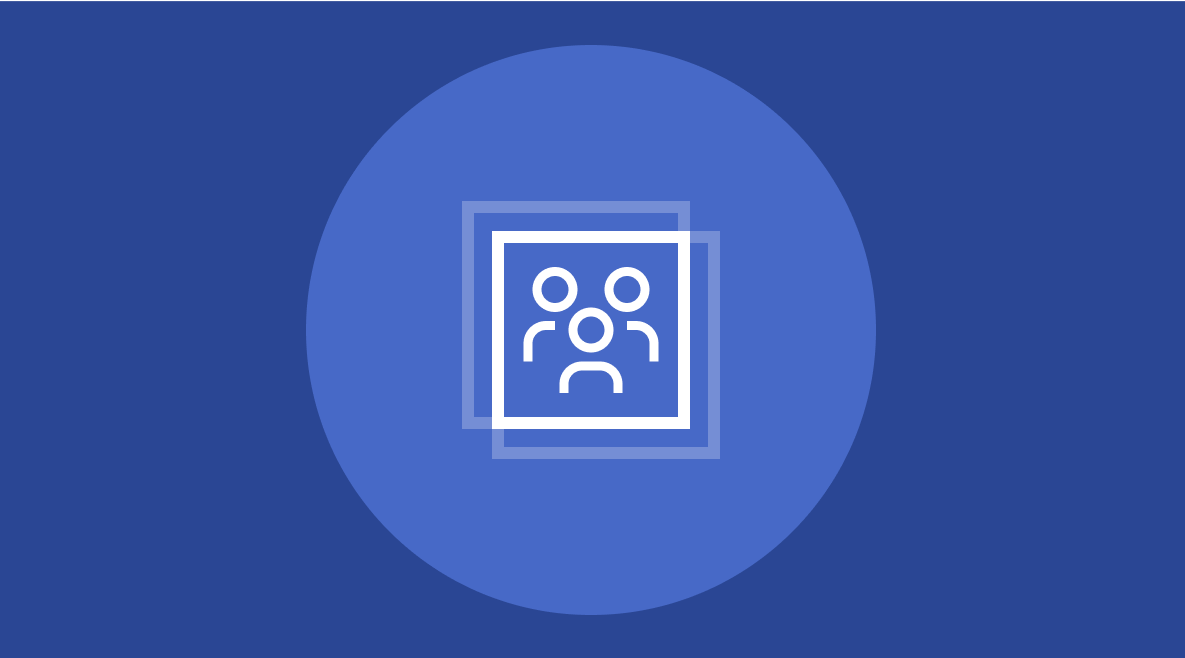
Data Quality
The Data Quality Toolkit for DHIS2 combines guidance and DHIS2-based tools to improve the quality of routine data at all levels, from the point of data entry to routine and annual data quality reviews. Minimum standards and measures for data quality follow the WHO’s Data Quality Assurance framework and incorporate best practices in DHIS2 design and configuration leveraged from 40+ countries who have implemented data quality procedures and tools in national DHIS2 systems. The toolkit leverages core DHIS2 functionality for configuring validation rules, establishing min-max values, conducting outlier analysis, comparing internal consistency, and analyzing completeness and timeliness. A custom application for facilitating annual data quality reviews using the WHO DQR framework module 4 is also available for optional installation and use.
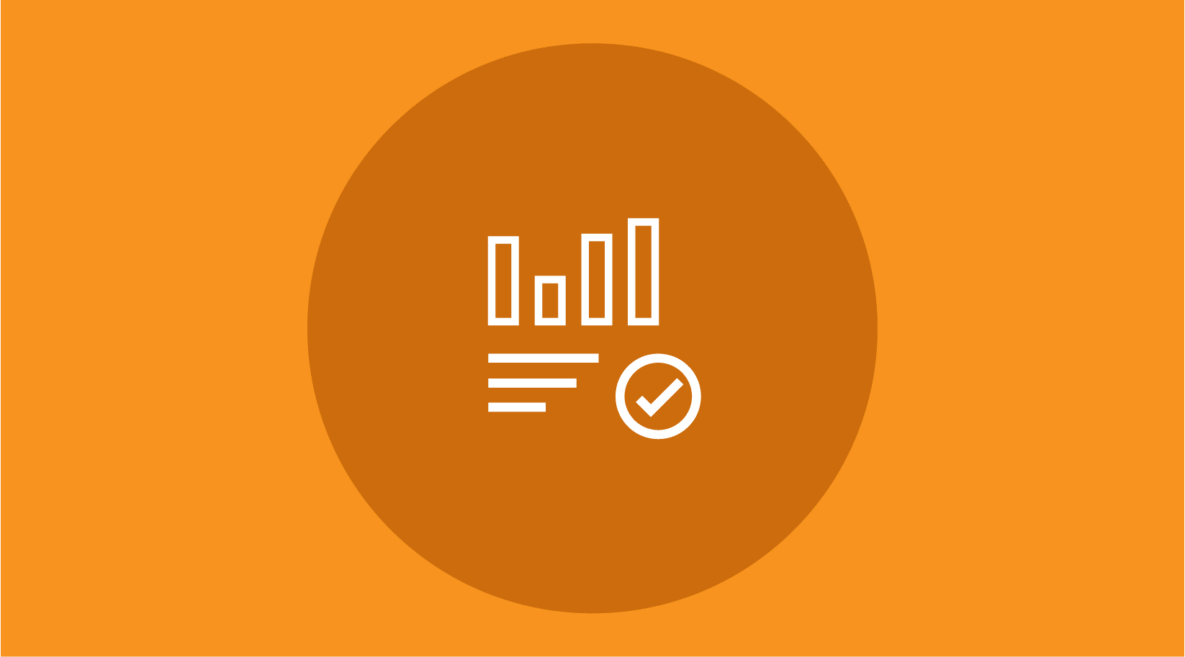
Integrated disease surveillance and response for notifiable and epidemic-prone diseases
A suite of DHIS2 tools, core software functionalities and resources was developed in close collaboration with WHO World Health Emergencies, WHO AFRO, and US CDC with support from Gavi to improve the wide-scale use of DHIS2 as a national scale integrated disease surveillance platform.
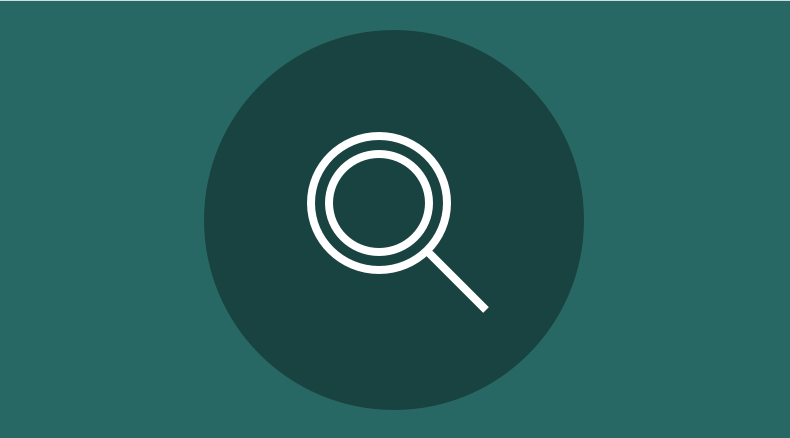
Integrated disease surveillance
Routine indicator-based surveillance in many countries comprises both weekly aggregate reporting and case-based modalities for priority diseases, which can be altered in frequency and scope in DHIS2 during periods of outbreaks or enhanced surveillance during emergencies. DHIS2 reference metadata are aligned to WHO AFRO’s Technical Guidelines for Integrated Disease Surveillance & Response (IDSR), which has been adopted by 44 Member States. These can be adapted based on regional and country context. Dashboards bring together both aggregate and case-based reporting for triangulation and include configurable outbreak/alert thresholds. System design guides explain how to configure disease thresholds, integrate lab data into case-based surveillance and use DHIS2 functionalities for surveillance use cases.
- Resources for routine syndromic surveillance of epidemic-prone diseases (aggregate reporting)
- Resources for case-based surveillance and lab data integration
- Metadata downloads
- Aggregate weekly reporting variables (IDS) and surveillance dashboards for 15 vaccine-preventable and epidemic prone diseases
- Integrated DHIS2 Tracker program for case-based reporting and lab data integration for 9 vaccine-preventable diseases
Mpox surveillance
The Mpox Surveillance Toolkit is designed to integrate mpox surveillance into routine health information systems (rHMIS), allowing for comprehensive data reporting and monitoring. This toolkit supports both case-based and aggregate reporting, ensuring alignment with the latest WHO 2024 interim guidance and newest WHO CRF/CIF updates.
Key components include:
- Aggregate weekly dataset for Integrated Disease Surveillance (IDS)
- Tracker for the Case Reporting Form (CRF)
- Tracker for the Case Investigation Form (CIF)
The metadata packages in this toolkit are designed as stand-alone modules, making it easier for stakeholders to adopt without requiring major system overhauls. The modular approach allows gradual implementation, ensuring essential surveillance components are adopted effectively, even in settings where broader systems may not yet be fully established.
Acute Febrile Illness Surveillance
Developed in partnership with US CDC’s Division of Global Health Protection, the DHIS2 toolkit for acute febrile illness (AFI) supports sentinel surveillance activities to complement routine surveillance and improve the detection of emerging, unknown and re-emerging disease threats.
Entomology & Vector Control
The DHIS2 modules for Entomology and Vector Control have been developed to support countries to improve the collection and use of entomological and vector control intervention data to inform programmatic decisions. Data and work flows vary greatly among the various entomological activities, methods and procedures. The modular approach to the toolkit allows countries to choose which modules to implement depending on programme needs. These modules have been designed with the WHO Global Malaria Programme and the WHO Neglected Tropical Diseases department to align with WHO global recommendations, standard procedures and guidance.
Incorporating entomology and vector control data into national health information systems alongside surveillance, stock and service delivery data can improve the triangulation of programme information for better intervention planning. The Entomology & Vector Control Design Guide describes the overall conceptual design of the modules for integrating entomology and vector control data into DHIS2.
Learn more about the use of DHIS2 for entomology and vector control activities from our joint HISP-WHO webinar.
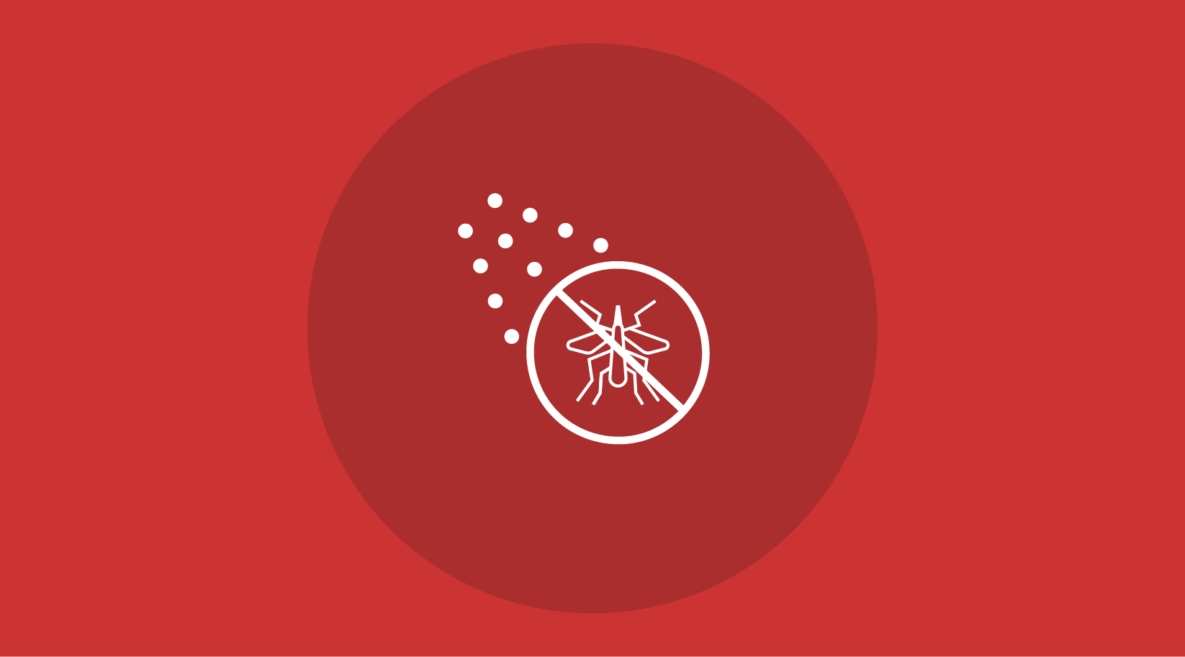
Insecticide Treated Nets (ITNs)
Insecticide treated nets (ITNs) are the most widely used vector control intervention and have substantially reduced the burden of malaria in Africa in recent decades. The following DHIS2 tools are designed to support various aspects of planning, implementing and monitoring ITN distribution campaigns.
- ITN Campaign: these tools support 1) household registration and microplanning for a mass campaign distribution; 2) real-time monitoring of campaign activities such as bednets distributed, households reached and progress toward distribution targets; and 3) integration of campaign outcome data into the national HMIS for program management. Resources
- ITN Bioefficacy Monitoring: this tool uses the DHIS2 event data model to support data: collection for measuring bioefficacy of ITNs according to the WHO cone bioassay testing guideline. Resources
Indoor Residual Spraying (IRS)
Along with ITNs, Indoor Residual Spraying (IRS) is one of two malaria vector control interventions recommended by WHO for large scale deployment. The following tools are available to support IRS interventions:
- IRS Campaign: this tool supports the integration of campaign data into the national HMIS for triangulation and programme management, such as coverage of structures and people. Resources
- IRS Residual Efficacy Monitoring: this tool uses the DHIS2 event model to collect data for measuring IRS efficacy according to the WHO cone bioassay procedure. Resources
Vector Breeding Site Monitoring
Larviciding is recommended by WHO as a supplementary intervention to ITNs or IRS in areas with ongoing malaria transmission where aquatic habitats are few, fixed and findable.
- Larviciding: this tool uses the DHIS2 Tracker data model to allow users to collect data on breeding sites (larval habitats), treatment of breeding sites with larvicides, and monitoring the effectiveness of larvicidal treatments. Resources
Health Emergency Preparedness and Response
DHIS2 supports health emergency preparedness and response by enabling real-time data collection, analysis, and coordination. It is used for early warning, surveillance, resource tracking, and workforce management, helping countries quickly mobilize and respond to public health emergencies. Its flexibility and scalability make it effective across both routine and crisis settings.
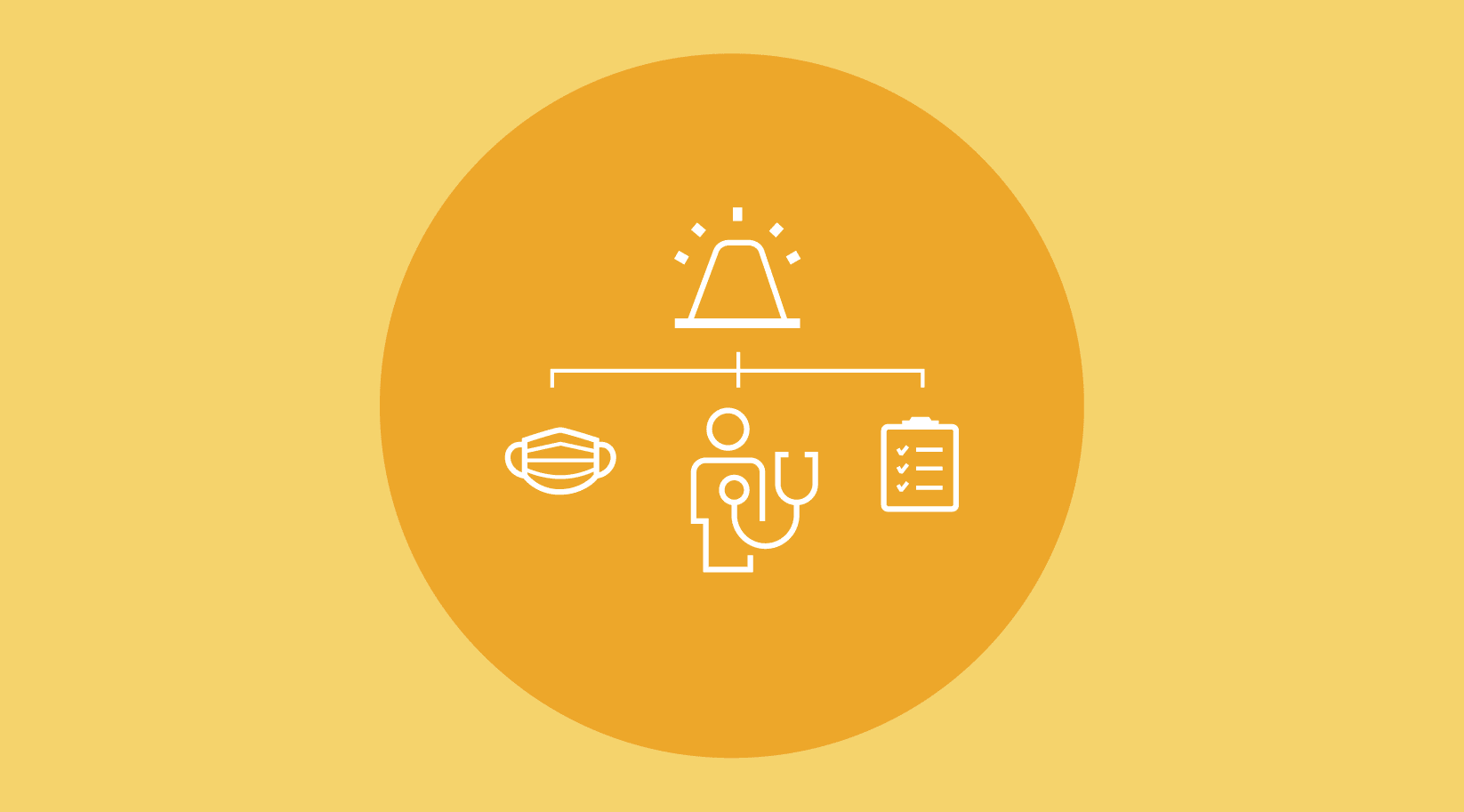
Rapid Response Team Rostering tool
The DHIS2 Rapid Response Team (RRT) Rostering tool enhances emergency preparedness by digitizing the workflows needed for countries to rapidly select band deploy responders to combat emerging public health threats—from responder registration and qualifications to deployment and post-deployment evaluation. Developed with technical expertise from CDC’s Emergency Response Capacity Team, the digital rostering tool can be adopted into existing nationalDHIS2 surveillance/IDSR systems to accelerate the time between detection of an infectious disease threats and response. The tool offers real-time visibility of skilled personnel, automated notifications, dashboards, and analytics to support planning and deployment. Usable at all administrative levels, it serves various roles including managers and responders. Developed with support from HISP Uganda with inputs from Ministries of Health including Sierra Leone, DRC, Mali, Mozambique, Cambodia and Zambia through a HISP-convened virtual technical working group.
Hepatitis
In collaboration with the WHO Department of Global HIV, Hepatitis and Sexually Transmitted Infections Programmes, HISP UiO has developed a DHIS2 Hepatitis toolkit to improve the analysis and use of routine data for hepatitis prevention, diagnosis, and treatment. This toolkit supports the implementation of person-centered monitoring across the full cascade of care for chronic hepatitis B (HBV) and hepatitis C (HCV), aligning with the WHO Consolidated guidelines on person-centred viral hepatitis strategic information: using data to support country scale-up of hepatitis prevention, diagnosis and treatment services.

Hepatitis dashboards and indicators for routine monitoring & programme management
The DHIS2 Hepatitis Toolkit provides dashboards and indicators that reflect WHO-recommended metrics for hepatitis programme monitoring. These visualizations are designed for use at national and sub-national levels to track progress against global and local elimination targets. More specifically, they support routine analysis of population-level data while maintaining patient confidentiality by leveraging anonymized, aggregated data from tracker-based or paper-based systems.
The system includes two aggregate datasets configured to model core indicators from individual-level data and accommodate routine reporting. These tools help ministries of health and implementing partners to:
- Monitor testing, treatment uptake, and outcomes across key populations
- Strengthen surveillance and reporting infrastructure
- Identify and address gaps in diagnosis and care
- Drive evidence-based planning, coordination, and response
All dashboards and indicators are fully aligned with the WHO’s analytical framework for hepatitis, and the metadata is available for download and adaptation.
HIV
Working closely with the WHO Department of Global HIV, Hepatitis and Sexually Transmitted Infections Programmes, DHIS2 has developed implementation products to improve analysis and use of routine HIV data and implement electronic individual-level systems for person-centered monitoring through the cascade of HIV prevention, case detection and diagnosis, ART uptake and maintenance, and viral suppression. The following DHIS2 resources are aligned with the WHO’s Consolidated guidelines on person-centred HIV strategic information: strengthening routine data for impact.
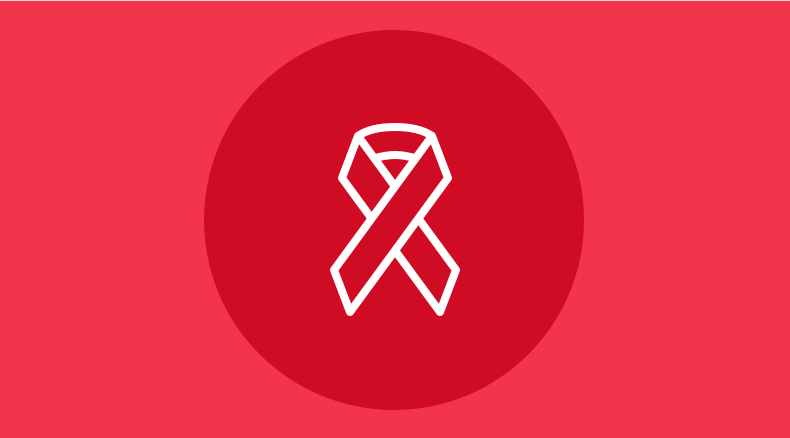
HIV dashboards & indicators for routine monitoring & programme management
More than 40 countries integrate recommended HIV programme management indicators and dashboards into the national DHIS2 system to improve analysis and use of routine data. At this level, data are anonymized and aggregated from various paper-based and electronic individual level systems to provide actionable insights to health stakeholders at all levels (e.g. programme managers, district health managers, policy & planning units) while safeguarding against unauthorized access to sensitive, confidential patient-level information. DHIS2 metadata for core indicators are aligned with the WHO’s corresponding Digital Adaptation Kit (DAK) resources. Data visualizations and dashboards are based on the WHO’s Analysis & use of health facility data: guidance for HIV programme managers. This module also includes support for facility reporting of HIV-related health commodities for triangulation and analysis with service delivery data.
- Resources
- Downloadable metadata for HIV dashboards and HIV indicators for integration with national HMIS
HIV Tracker for Person-Centered Monitoring
The DHIS2 Tracker data model can be used to support person-centered monitoring throughout the cascade of HIV prevention interventions and case surveillance. The design of the Tracker programs promoted through this toolkit allows for individual-level data collected through DHIS2 Tracker to be mapped and exchanged as aggregated values for programme monitoring & analysis with the HIV indicators and dashboards above. Note that the DHIS2 Tracker for person-centered monitoring does not serve as the data source for all HIV indicators included in HIV module above. Additional data sources such as Spectrum estimates of PLHIV and stock data are typically required for full programmatic analysis.
The DHIS2 Tracker tools for HIV prevention and case surveillance are aligned to the data dictionaries and indicator references published in the WHO’s corresponding Digital Adaptation Kit (DAK). Note that these tools are not designed to support all aspects of clinical care guidelines and case management contained in the DAK or to replace robust facility EMRs; however, data from EMRs can be consumed into the DHIS2 tracker model for analysis and use as part of a national registry.
- HIV Case Surveillance Resources
- HIV Prevention Resources
- HIV tracker metadata available for download
- FHIR Implementation Guide: a FHIR implementation guide (IG) is available to demonstrate a detailed mapping between DHIS2 tracker metadata and FHIR resources using the WHO-approved HIV case surveillance tracker.
Immunization
The World Health Organization (WHO), UNICEF, and Gavi, the Vaccine Alliance have partnered with DHIS2 to improve national immunization coverage through better data collection, analysis and use. The DHIS2 Immunization Toolkit is a modular suite of tools that support routine immunization, supplemental immunization activities, zero-dose identification and triangulation of programme data to improve interventions.
Check our our DHIS2 immunization channel on YouTube to browse webinars and recordings (available in English and French) on the use of DHIS2 tools for immunization programmes.
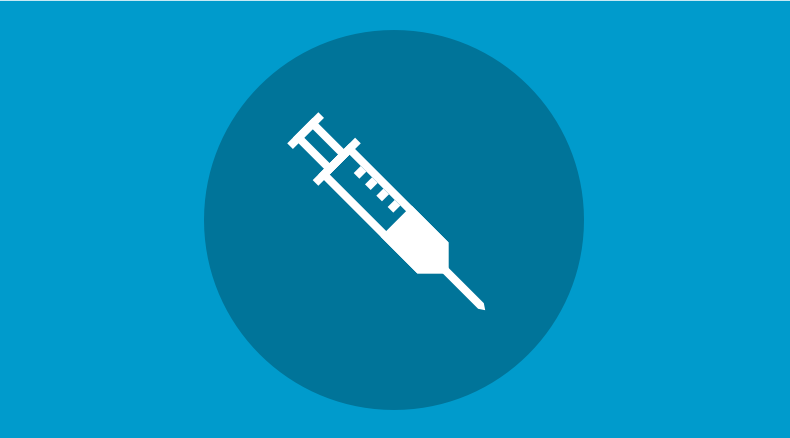
Routine immunization module for HMIS
The routine immunization module is developed with the WHO department for Immunization, Vaccines & Biologicals with subject matter expertise from WHO AFRO’s immunization programme. The module supports analysis of key indicators for the Expanded Programme on Immunization (EPI) such as vaccine coverage, cold-chain equipment, and facility stock management. We also provide guidance on integrating new antigens such as the malaria vaccine into routine immunization data systems.
- Resources
- Facility vaccine stock data management
- Malaria vaccine integration
- Metadata available for download
Big Catch-Up (BCU) module
The Big Catch-Up (BCU) is a global initiative led by WHO, UNICEF, Gavi, and key partners to restore immunization coverage following disruptions caused by the COVID-19 pandemic. It focuses on reaching Zero-Dose and under-immunized children through catch-up activities and strengthening routine immunization (RI) systems. The module supports the analysis of key indicators for the BCU vaccine distribution, uptake, and Behavioral and Social Drivers of Vaccination. The guidance also provides information on how to adapt the existing RI frameworks and smoothly integrate the catch-up activity from the data entry to the analytic stages.
Enhanced Dashboards & Analytics Tools
The following tools are available as optional add-on applications for enhancing analysis and use of immunization data in DHIS2. In addition, triangulation dashboards for EPI programmes bring disease surveillance data together with routine immunization data to improve programme performance and identify immunity gaps.
- Resources for Triangulation Dashboards for Immunization Programmes
- Bottleneck Analysis App
- Scorecard App
Electronic Immunization Registry (EIR)
These tools support the digitization of national-scale immunization registries with DHIS2 Tracker. Designed for clinicians and staff at health facilities, the tool enables registration and tracking of children through the routine immunization schedule. The design is based on the WHO recommended schedule for routine immunizations for children and can be adapted to national vaccination policies, as well as for other use cases such as vaccination of health care workers and adult populations for influenza or COVID-19. The registry supports the generation of key indicators that are included in the routine immunization module for HMIS, as well as additional analyses made possible with individual level data to detect immunity gaps and delayed immunization.
- Resources for child vaccination registry
- Resources for COVID-19 vaccination registry
- Metadata available for download
Campaigns (Supplemental Immunization Activities)
Immunization campaigns or supplemental immunization activities (SIA) are typically run in areas with immunity gaps or low coverage rates. Such campaigns can be conducted as a response to an outbreak of a vaccine-preventable disease like meningitis, or can be targeted in areas or populations that face barriers to accessing routine health services.
- Design & configure DHIS2 for real-time monitoring of campaigns. Resources
- Use DHIS2 applications and functionalities to support microplanning, real-time monitoring and triangulate campaign coverage with other data sources. Resources
- Implement DHIS2 for campaign use cases: implementation considerations for variable deployment strategies, such as offline data collection and infrastructure requirements unique to campaign use cases. Resources
Vaccine Preventable Disease Surveillance
The HISP Centre in partnership with WHO Health Emergencies, WHO AFRO and CDC WHO AFRO’s Technical Guidelines for Integrated Disease Surveillance & Response (IDSR). These can be adapted based on regional and country context. Dashboards bring together both aggregate and case-based reporting for triangulation and include configurable outbreak/alert thresholds. System design guides explain how to configure disease thresholds, integrate lab data into case-based surveillance and use DHIS2 functionalities for surveillance use cases.
- Resources for routine syndromic surveillance (aggregate reporting)
- Resources for case-based surveillance and lab data integration
- Metadata downloads are available
- Aggregate weekly reporting variables (IDS) and surveillance dashboards for 15 vaccine-preventable and epidemic prone diseases
- Integrated DHIS2 Tracker program for case-based reporting and lab data integration for 9 vaccine-preventable diseases
Epidemic-prone Diseases: Mpox
Designed in collaboration with Gavi and WHO, this Mpox toolkit leverages extensive feedback from the HISP network and partner countries. It offers a flexible, scalable solution for integrating Mpox vaccination into existing health systems or introducing it in epidemic contexts. The toolkit’s adaptable structure can support other vaccines like Ebola, ensuring its utility in broader public health responses while maintaining essential functionality for epidemic-prone diseases.
Adverse Events Following Immunization
DHIS2 Tracker can be used to support the notification, reporting, investigation and analysis of adverse events following immunization. This tool is ideal for countries that already manage their immunization programme data in DHIS2, and can streamline reporting from the lowest levels of the health system and triangulate with other programme data, including immunization registry data. The tool incorporates WHO recommended core variables for AEFI reporting and can be used to generate data for reporting into WHO’s global system for pharmacological surveillance, VigiBase.
Logistics
DHIS2 provides a simple, user-friendly application for managing stocks and equipment at the facility or community level that can be seamlessly integrated with full-scale, upstream national logistics management information systems (eLMIS). Resources in the Health Data Toolkit are designed to make it easier to implement DHIS2-based logistics systems.

Stock Data Reporting
The aggregate stock data configuration has been packaged and included as part of the health data toolkit. This will facilitate easy startup of stock data collection at the health facility level by including recommended metadata with medicines for a variety of health programs as a cross-cutting stock management tool that provides visibility at the lowest level of the supply chain. It can be implemented for an individual program and scaled up to include others as needed. Recommended stock dashboards have also been developed to provide a starting point for supply chain analytics, including visualizations on stock availability, stockout count, stock coverage time, and stock reports. This dashboard can be integrated as part of a holistic HMIS.
Malaria
The malaria toolkit for DHIS2 is developed in partnership with the WHO Global Malaria Programme (GMP) to support a broad range of data management functions, from routine case surveillance and service delivery to monitoring availability of health facility commodities and preventative interventions. These tools support data collection from public and private facilities as well as community health workers to provide a comprehensive picture for malaria programme managers and sub-national health staff.
Various modules and tools can be selected and adapted by countries according to the interventions they deploy based on malaria transmission and other factors. The tools support countries to deploy appropriate interventions and monitoring systems according to sub-national stratification in both burden reduction and elimination settings. The toolkit is a part of WHO GMP’s recommended digital solutions for malaria, designed to support the recommendations within GMP’s consolidated Guidelines for Malaria (2023).
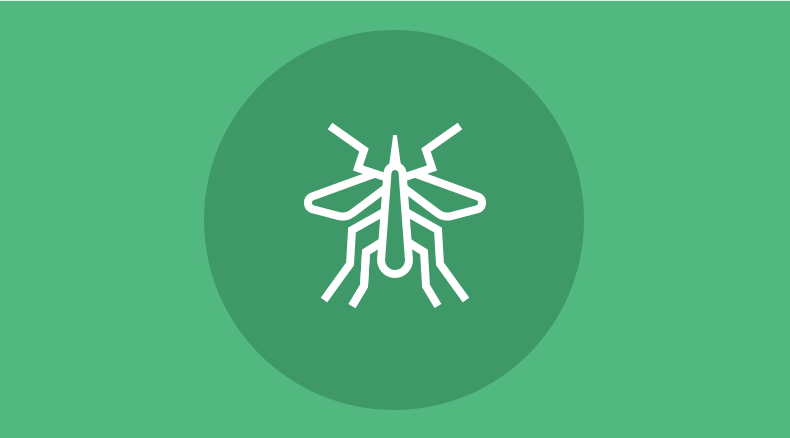
Malaria Module for HMIS
The malaria module for HMIS supports routine reporting and analysis of service delivery, treatment, and other activities such as continuous bed-net distribution from public facilities, private facilities and community health workers. Datasets and indicators for burden reduction and elimination settings can be selectively deployed at sub-national level according to stratification. The module also includes a Data Quality dashboard for malaria programmes, district-level dashboards, and analyses for triangulating facility stock data with service delivery data. As part of an integrated HMIS, new interventions such as the malaria vaccine are also supported in DHIS2 as part of an integrated immunization module and can be triangulated with routine malaria surveillance data.
- Routine and annual malaria data
- Facility stock monitoring & triangulation
- Malaria vaccine
- Data Quality Dashboard
- District Dashboard
- Downloadable metadata available
Malaria Surveillance in Elimination Settings
DHIS2-based tools help to transform surveillance into a core malaria intervention and accelerate country progress toward elimination. These tools support countries to implement key recommendations contained in the WHO’s Malaria Surveillance, Monitoring & evaluation: a reference manual (2018) in elimination-targeted geographies. The DHIS2 Tracker model allows for case notification, investigation & classification to identify local transmission and prevent re-introduction in areas where malaria is already eliminated. The foci investigation tracker enables surveillance staff to identify, investigate, map and classify foci based on malaria transmission as well as conduct and monitor foci response activities. The design allows for cases to be linked to foci and analyzed on a map; and optimizes decentralized workflows where data collection and reporting may be carried out by numerous actors at health facility, district surveillance officer or national program level.
These tools were developed with support from the Global Fund and the Bill & Melinda Gates Foundation, with technical leadership provided by the WHO Global Malaria Programme and inputs from the Digital Solutions for Malaria Elimination Community of Practice.
Seasonal Malaria Chemoprevention (SMC)
The Seasonal Malaria Chemoprevention (SMC) module in DHIS2 supports the monitoring of antimalarial drug distribution across all campaign cycles targeting children under five in seasonal malaria transmission regions. This aggregate tool provides a centralized dashboard for SMC data, enabling health programs to assess coverage and campaign outcomes. To ensure comprehensive analysis and impact evaluation, data from the SMC dashboard is triangulated with existing malaria dashboards in the DHIS2 Malaria Toolkit, offering integrated insights to optimize planning, resource allocation, and malaria prevention efforts.
Vector Control for Malaria Programmes
Tools for entomology and vector control activities such as ITN and IRS campaigns are included in the section Entomology & Vector Control. Many of these tools support the integration of key entomological and vector control data into a national HMIS for triangulation with service delivery and surveillance data for improving programme management.
Improve mortality data and strengthen national CRVS
Mortality surveillance is a critical intervention for helping Ministries of Health understand the leading causes of death among their populations and make strategic decisions about planning and resource allocation. DHIS2 also supports the strengthening of national CRVS systems by facilitating birth and death notifications from health facilities.
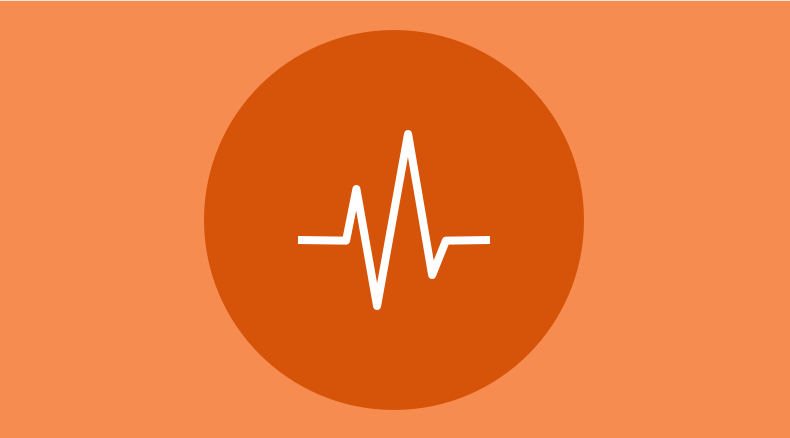
Cause of Death Reporting & Analysis
The ICD-11 Cause of Death tool uses the DHIS2 Tracker data model and a custom DHIS2 web application to facilitate digitizing the WHO’s standard Medical Certificate of the Cause of Death (MCCOD) in a national DHIS2 system, facilitate ICD-11 coding for the underlying cause of death, and provide advanced analytics. The application supports interoperability with the WHO ICD-11 API and WHO’s DORIS coding tool to automate the selection of the underlying cause of death based on the data reported, assign and store the appropriate ICD-11 code in DHIS2.
Countries that have not yet transitioned to ICD-11 can take advantage of the following resources for incorporating the MCCOD reporting form in DHIS2, exporting cause of death data to the WHO’s Anacod format for analysis, and where applicable use DHIS2 program rules engine to assign a cause of death based on ICD-10 Start-up Mortality List (SMoL). The core metadata captured in this DHIS2 tracker program is the same as the data collected through the ICD-11 custom application to ease the transition to ICD-11 when countries are ready.
Rapid Mortality Surveillance
The Rapid Mortality Surveillance (RMS) tool uses the DHIS2 event data model (tracker program without registration) to record anonymous, line-listed fact-of-death reporting from communities and health facilities. Combined with historical data on total deaths (captured in the HMIS, or modeled and imported from), RMS provides powerful analyses for calculating excess deaths and understanding the true impact of epidemics such as COVID-19 in near real-time – even in the absence of complete cause of death reporting.
This tool is aligned with the WHO’s Technical Package for Rapid Mortality Surveillance and Epidemic Response (2020) and was developed with support from US CDC.
Vital Events Notification
Vital Events notification expands coverage of the reporting of vital events from health facilities such as birth, stillbirths, and death to the national CRVS. When implemented in DHIS2 using the Tracker data model, health facilities can send notifications to relevant CRVS stakeholders for registration or can exchange data with electronic CRVS systems. Notifications are not intended to replace the official national CRVS or the legal framework of implementing countries, but it is expected to improve and strengthen reporting of births and deaths. In turn, strong CRVS systems often provide key denominator data for many health performance indicators in the HMIS such as vaccination coverage.
The DHIS2 Vital Events Notification tool was developed with UNICEF in support of Health Sector Contributions Towards Improving The Civil Registration of Births and Deaths in Low-Income Countries with support from Gavi.
Neglected Tropical Diseases
The Neglected Tropical Diseases (NTD) overarching module provides a robust digital framework for routine reporting on NTDs within national health management information systems (HMIS). Built on WHO guidelines and reporting standards, it supports the collection of standardized data across 30+ diseases while allowing for localization to align with specific country needs. By facilitating integration with existing health systems, it enables efficient monitoring, control, and elimination efforts. The module also aids progress tracking towards the WHO 2021-2030 roadmap goals, targeting significant reductions in NTD-related morbidity and interventions.

NTD Overarching Module
The NTD Overarching Module in DHIS2 provides a comprehensive framework for managing and reporting data on NTDs, aligned with WHO guidelines and the Global NTD Annual Reporting Framework (GNARF). Covering over 30 NTDs, the module supports data collection on surveillance, human resources, and treatment efforts. Designed to integrate with national health systems, it enables countries to adapt the toolkit for local needs, streamline workflows, and enhance decision-making through dashboards and analytics.
This module supports the monitoring and analysis of the following diseases, and more: Buruli ulcer, Chagas disease, chikungunya, chromoblastomycoses, sporotrichosis, paracoccidioidomycosis, dengue and severe dengue, dracunculiasis (Guinea worm disease), cystic echinococcosis, foodborne trematodes, Human African Trypanosomiasis (gambiense and rhodesiense), cutaneous, mucocutaneous, and visceral leishmaniasis, leprosy, lymphatic filariasis, mycetoma, noma, onchocerciasis, rabies, scabies, schistosomiasis, snakebite envenoming, soil-transmitted helminthiasis, taeniasis and cysticercosis, trachoma, tungiasis, and yaws. Countries can tailor the module to fit their specific program profiles, selecting diseases relevant to their local context.
Buruli Ulcer Disease-specific Module
The Buruli Ulcer (BUR) module in DHIS2 offers a detailed configuration for the routine reporting and analysis of Buruli ulcer cases, aligned with WHO technical guidance and integrated within the broader NTD DHIS2 framework. Built to expand on the NTD Overarching Module, the Buruli Ulcer module enables countries to capture disease-specific data on case classification, treatment outcomes, and referrals, with disaggregations tailored to the Global NTD Annual Reporting Framework (GNARF). It supports countries in aligning national surveillance systems with the 2021–2030 WHO NTD roadmap, particularly the objective of improving integrated skin NTD management and reducing disability.
The Buruli Ulcer module includes structured datasets for monthly reporting at the facility level, dashboards for decision-making, and practical tools for early detection and case management. It introduces enhanced detail such as lesion type, treatment completion, referral types, and patient demographics by age and sex, ensuring a more granular understanding of disease dynamics. The module is interoperable with both the NTD Overarching Module and the Health Facility Profile toolkit, allowing countries to choose appropriate integration pathways and avoid duplicate reporting.
As part of a modular toolkit strategy, the Buruli ulcer module allows countries to progressively scale up from generalized to disease-specific reporting, providing greater visibility into program performance and improving data quality for national and global monitoring.
Human Rabies Surveillance
The NTD Human Rabies Surveillance Module is a focused aggregate dataset designed for granular monitoring of rabies cases. Building on and expanding the general overarching module, it supports data collection on case classification, exposure details, post-exposure prophylaxis (PEP) administration, and outcomes, disaggregated by age, sex, and wound type. As part of the overarching NTD toolkit, this module facilitates integration with national reporting systems, contributing to the WHO’s goal of eliminating human rabies deaths by 2030 in endemic regions.
Integrating rabies surveillance with animal monitoring is vital for managing zoonotic diseases like rabies, leishmaniasis, anthrax, and brucellosis, which rely on animal reservoirs. The DHIS2 Animal Health Toolkit facilitates this One Health approach by enabling systematic tracking of animal populations and mapping transmission pathways. This integration supports real-time reporting, cross-sectoral collaboration, and comprehensive risk management. By combining human and animal surveillance data, health authorities can effectively address zoonotic risks, enhancing the health of people, animals, and ecosystems.
Schistosomiasis Disease-specific Module
The Schistosomiasis (SCH) module in DHIS2 provides a comprehensive, disease-specific toolkit for the routine collection, reporting, and use of data on schistosomiasis surveillance, treatment, and vector monitoring. Building on the foundation of the NTD Overarching Module, it aligns with WHO guidelines and supports country strategies for eliminating schistosomiasis as outlined in the 2021–2030 NTD road map. The module enables implementers to track disease burden, monitor preventive chemotherapy (PC) coverage, and respond to outbreaks by integrating surveillance from health facilities, community-level outreach, and environmental risk data.
The SCH module includes three distinct datasets: surveillance at the point of care, outreach screening and survey activities, and integrated vector management (IVM). Together, they provide rich data on diagnostic methods, parasite species, lesion types, animal reservoirs, and treatment strategies. Each dataset is designed for monthly reporting and disaggregated by sex and GNARF age groups, ensuring compatibility with national and global reporting standards. A predefined dashboard links the datasets for real-time analysis and program planning.
Countries can adapt the SCH module to their epidemiological context, integrate it with CHIS and vector control systems, and triangulate data across health and environmental sources for a One Health-aligned response. This approach enhances early detection, supports targeted interventions, and accelerates progress toward SCH elimination goals.
Last-Mile Logistics
The DHIS2 NTD Toolkit strengthens national health information systems by integrating NTD data into a harmonized DHIS2 platform. It includes resources for last-mile logistics information systems, improving visibility and management of medicines and health products to reduce stock-outs and ensure timely delivery of treatments. You can explore the demo site to see a sample configuration aligned with WHO-recommended guidelines and learn how countries can use these tools to enhance decision-making and accelerate progress toward elimination targets.
Non-communicable diseases
Noncommunicable diseases (NCDs), including heart disease, stroke, cancer, diabetes and chronic lung disease, are responsible for 74% of all deaths worldwide. More than three-quarters of all NCD deaths occur in low- and middle-income countries (WHO). Due to the breadth of non-communicable disease conditions, leveraging DHIS2 as an integrated national health information system from primary care to tertiary care levels enables countries to monitor in near real-time the burden and distribution of NCDs while reducing the duplication of data collection and enabling analysis of co-morbidities with other health conditions.
For additional non-communicable disease topics, see the Rehabilitation and Sensory, Vision & Hearing topics on this page.
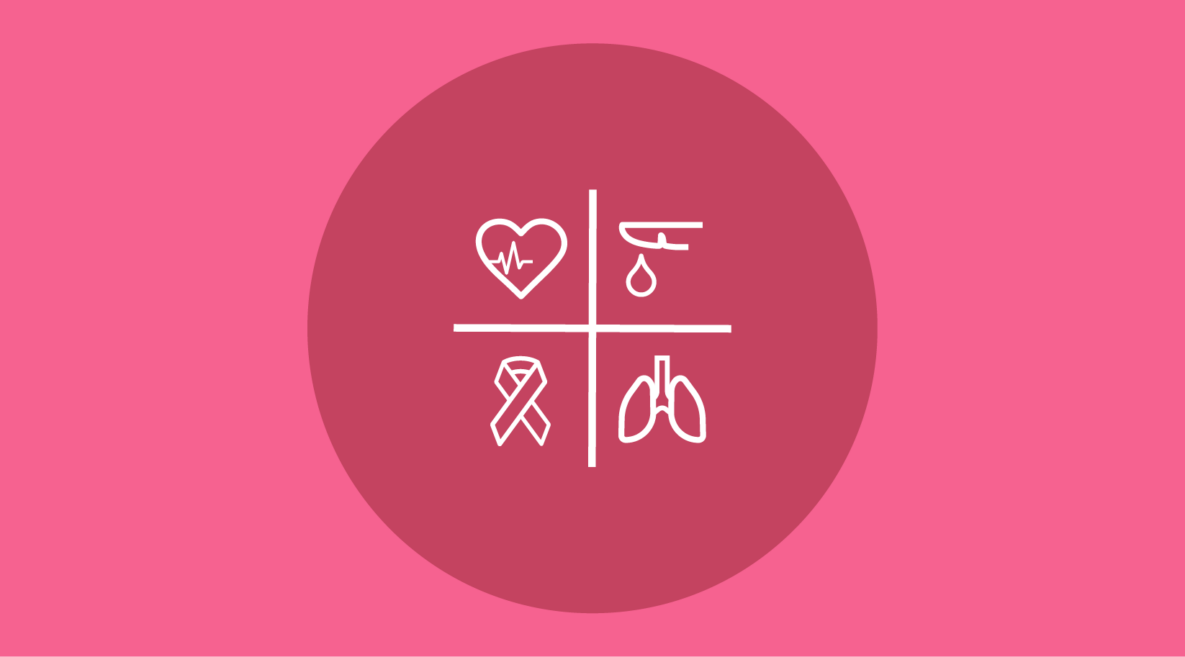
Hypertension
An estimated 1.28 billion adults aged 30-79 years worldwide have hypertension, most (two-thirds) living in low- and middle-income countries. Yet, only 1 in 5 adults (21%) with hypertension have their blood pressure under control (WHO, 2021). To help countries implement broad-scale hypertension screening and control programs, DHIS2 partnered with Resolve to Save Lives, WHO, Federal Ministry of Health Nigeria and HISP Nigeria to develop a point-of-care tool for rapidly registering hypertension patients and allowing for follow-up over time. The longitudinal data model generates key metrics for monitoring blood pressure control and is designed to populate DHIS2 dashboards as part of a national integrated HMIS. Based on the DHIS2 Tracker data model and using the DHIS2 Android app, this tool is available as a global resource for local adaptation and use.
Implementation in more than 100 high volume facilities in Nigeria reduced waiting time for follow-up visits to under 30 seconds; use of DHIS2 working lists re-linked 1,222 people (69%) of patients back to care; and helped to increased the number of diagnosed patients by more than 50% compared to the year prior to the digital intervention
Nutrition
Monitoring nutrition outcomes includes routine data collection from facilities and community-based interventions, as well as mass event activities (such as Vitamin A supplement campaigns). A metadata package was developed in collaboration with UNICEF and is intended as a practical tool to accompany UNICEF’s nutrition information systems guidelines to support the uptake of standard nutrition indicators and analyses in national DHIS2 systems. The package covers the following health interventions: vitamin A/IFA supplementation, infant and young child feeding, maternal counseling, growth monitoring & promotion, and wasting. Dashboards are designed to facilitate analysis of nutrition indicators from health facilities and community-based interventions, with further guidance provided on how to triangulate these data with components of the joint UNICEF/WHO CHIS package for monitoring community health workers interventions.
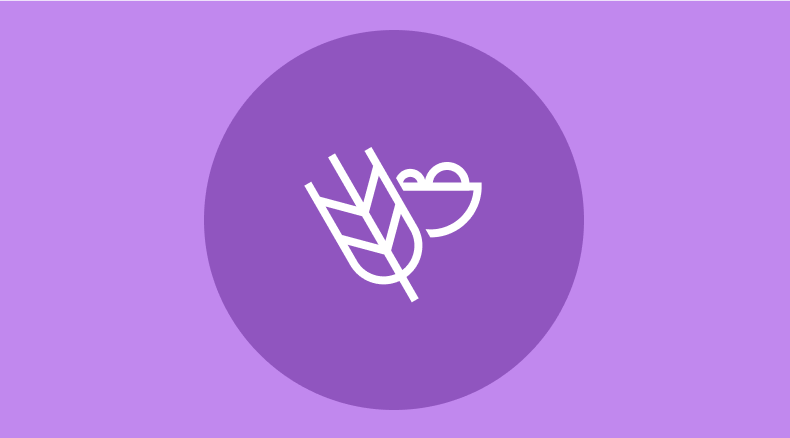
Rehabilitation
In response to a global call to action to increase access to rehabilitation as an essential health service through an integrated health system strengthening approach, HISP Centre has worked with the WHO Rehabilitation Division to develop DHIS2 resources for incorporating core strategic and operational metrics into national systems. WHO indicators based on routine facility data help programme planners and policy makers are incorporated into DHIS2 dashboards. DHIS2. An HMIS module has been developed in support of the Rehabilitation 2030 initiative.

Reproductive, maternal, neonatal, child & adolescent health
Based on a set of guidelines from WHO and UNFPA, DHIS2 toolkits have been developed to facilitate the integration of routine facility data into national HMIS platforms for monitoring reproductive, maternal, neonatal, child, and adolescent health, supporting data use for programme management, quality improvement, and accountability.
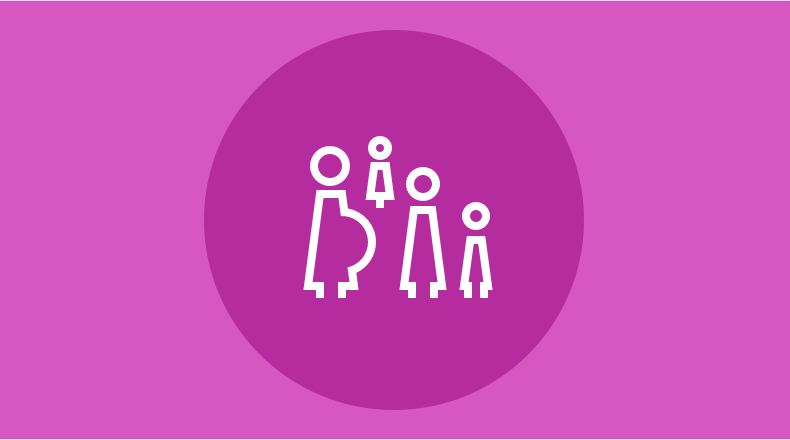
RMNCAH dashboards & indicators for analysis of facility data
DHIS2 dashboards and core indicators support WHO-recommended data visualizations and interpretation guidance and can be used by national programmes as well as district and sub-national staff. Use of the module can be optimized by training staff to interpret indicator values and understand their implications for RMNCAH programme management as described in the WHO guidance document.
Antenatal Care (ANC) Registry
DHIS2 Tracker can be used as an electronic antenatal care (ANC) registry to facilitate person-centered monitoring and individualized follow-up of pregnant women through the cascade of primary health care services. HISP Centre in partnership with the Norwegian Institute of Public Health designed and published a DHIS2 Tracker-based ANC registry as a reference implementation to demonstrate how countries can incorporate data standards from the WHO Digital Adaptation Kit (DAK) for Antenatal Care into national DHIS2 systems. The DAK provides a comprehensive list of data elements for various services and stages in a typical ANC program, as well as nine indicators. We also recommend users to refer to the DAK documentation and Web Annexes for a broader conceptual understanding of this use case.
The DHIS2 Tracker adaptation of the ANC DAK was developed in collaboration with the Makerere University School of Public Health, Norwegian Institute of Public Health, HISP Uganda, and the University of Bergen. The configuration uses a subset of the recommended ANC DAK data dictionary based on contextualization within a routine system through the joint research project, adheres to the core indicator definitions in the DAK and adds a suite of dashboard visualizations developed jointly with system users in Uganda.
EmONC dashboards and indicators for routine monitoring & programme management
The DHIS2 EmONC Toolkit provides dashboards and indicators aligned with the UNFPA EmONC Light Assessment Tool. These visualizations are designed for use at facility, sub-national, and national levels to monitor service availability, readiness, and outcomes. More specifically, they enable routine analysis of aggregated data across EmONC domains—while maintaining simplicity, comparability, and alignment with national reporting workflows.
The system includes a single aggregate dataset structured around EmONC LAT domains and supports quarterly or biannual reporting. Core indicators are grouped by readiness, signal functions, service utilization and outcomes, and referral system performance. These tools help ministries of health and implementing partners to:
- Monitor the availability of essential drugs, supplies, equipment, and infrastructure across EmONC facilities
- Assess the functionality and performance of EmONC signal functions at different levels of care
- Track maternal and newborn health service utilization and outcomes
- Strengthen referral systems and identify gaps in service readiness and delivery
All dashboards and indicators are aligned with global EmONC standards and UNFPA LAT guidance, and the metadata is available for download and adaptation.
MPDSR dashboards and indicators for routine monitoring & programme management
The DHIS2 MPDSR Toolkit provides dashboards and indicators that reflect WHO‑recommended metrics for monitoring maternal and perinatal deaths and the functioning of MPDSR systems. These visualizations are designed for use at facility, sub‑national, and national levels to support timely case identification, high‑quality reviews, and evidence-based response actions. More specifically, they enable routine analysis of trends, causes of death, delays, and modifiable factors, while maintaining confidentiality through de‑identified, aggregated or tracker‑derived data.
The system includes an event program, two tracker programs, and an aggregate dataset configured to model core MPDSR indicators and accommodate routine reporting workflows. Together, these tools help ministries of health and implementing partners to:
- Track maternal, stillbirth, and neonatal deaths and monitor the completeness of reporting and reviews
- Strengthen MPDSR system functionality, including committee activity, notification pathways, and follow‑up actions
- Identify patterns in causes of death, delays, and modifiable factors across facilities and districts
- Drive evidence‑based planning, accountability, supervision, and quality improvement interventions
All dashboards and indicators are fully aligned with WHO and UNFPA MPDSR implementation guidance, and the metadata is available for download and adaptation.
Sensory functions (ear & eye care)
The global need for eye and ear care is projected to increase dramatically in the coming decades associated with demographic, behavioral and lifestyle trends. The World report on vision and World report on hearing recommend to strengthen national routine health information systems to monitor morbidity trends, track progress toward national programme objectives, and estimate service utilization, quality, and coverage for improved decision-making at all levels for health policy, management, and clinical care guidance.
DHIS2 resources are available for national programmes to integrate routine ear and eye care indicators into DHIS2, aligned with the WHO’s Guidance on the Analysis & Use of routine health information systems: ear and eye care module. Reference dashboards are provided to demonstrate how routine data can be visualized in DHIS2 to provide timely insights for health programme staff.

Sexually Transmitted Infections
In collaboration with the WHO Department of Global HIV, Hepatitis and Sexually Transmitted Infections Programmes, HISP UiO has developed a DHIS2 STI toolkit to strengthen surveillance and improve the routine use of data for the prevention, diagnosis, and management of sexually transmitted infections. This toolkit supports the implementation of person-centred monitoring across key STI-related services, aligning with the WHO Framework for monitoring sexually transmitted infections and strengthening surveillance, and the Consolidated guidelines on person-centred HIV strategic information.
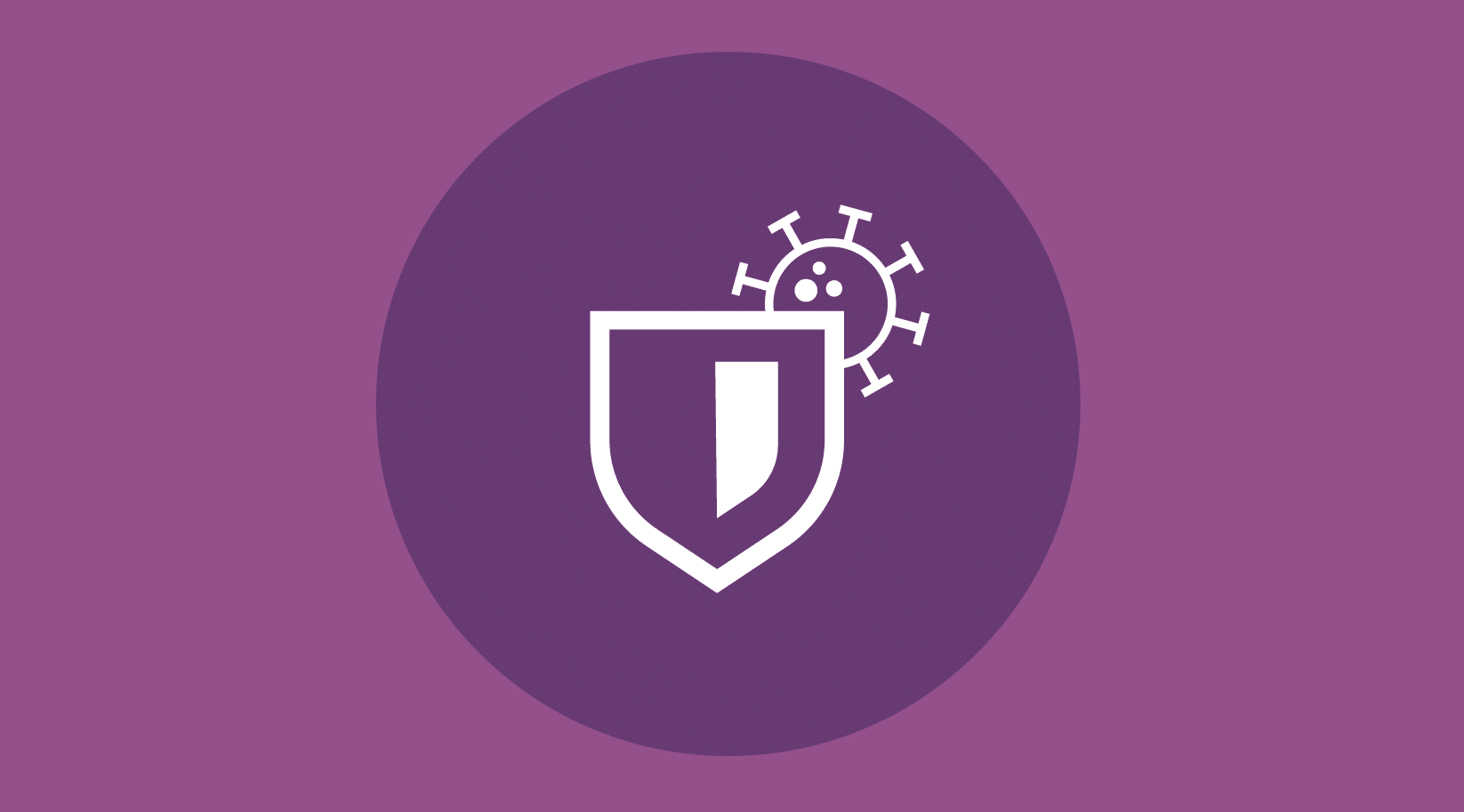
STI dashboards and indicators for routine monitoring & programme management
The DHIS2 STI Toolkit provides dashboards and indicators that reflect WHO-recommended metrics for STI programme monitoring. These visualizations are designed for use at national and sub-national levels to support programme improvement and timely response. More specifically, they facilitate the analysis of population-level data while maintaining patient confidentiality by leveraging anonymized, aggregated data from tracker-based or paper-based systems.
The system includes one aggregate dataset configured to model core indicators from individual-level data and accommodate routine reporting. These tools help ministries of health and implementing partners to:
- Monitor STI syndromes and laboratory-confirmed diagnoses across service delivery points
- Track syphilis testing and treatment among pregnant women in antenatal care
- Strengthen surveillance infrastructure and routine data management
- Identify and respond to gaps in prevention, diagnosis, and care
- Drive evidence-based planning, coordination, and service delivery improvements
All dashboards and indicators are fully aligned with WHO’s STI analytical framework, and the metadata is available for download and country-level adaptation.
Tuberculosis (TB)
The tuberculosis (TB) toolkit for DHIS2 is developed in partnership with the WHO Global Tuberculosis Programme (GTP). A modular set of resources is available for national TB programmes and HMIS teams to incorporate the WHO’s recommended reporting framework and dashboard analyses for case notification, laboratory results, treatment outcomes, indicators on comorbidity of TB in HIV patients, and prevention activities. Individual-level tools using DHIS2 Tracker are available for digitizing TB case surveillance and conducting sample-based anti-TB drug resistance surveys according to GTP protocols. This toolkit is made possible by support from The Global Fund.

TB Module for HMIS
The TB module for HMIS supports routine reporting and analysis of case notification, diagnostic and laboratory data, treatment outcomes, indicators on comorbidity of TB in HIV patients, and prevention activities like screening of household contacts. The module also includes a Data Quality dashboard for TB programmes, district-level dashboards, and analyses for triangulating facility stock data and lab data with service delivery data to improve programme management.
- General resources
- TB notifications and outcomes
- TB laboratory
- TB prevention for household contacts
- TB Data Quality Dashboard
- TB facility stock reporting & triangulation dashboards
TB Case Surveillance
For countries seeking to digitize individual-level case surveillance activities, the DHIS2 TB Case Surveillance tracker provides a high-quality design that is aligned to the WHO Global TB Programme’s guidelines and recommendations. The TB Case Surveillance tracker is intended for implementation alongside the TB HMIS modules, providing a tool for individual level data collection that can populate core TB programme monitoring indicators and dashboard analyses. The electronic tracker improves the ability of programme’s to link laboratory data to case notifications and monitor a given case through its outcome.
Anti-tuberculosis drug resistance survey
The TB DRS Module in DHIS2 is a data collection tool designed specifically for anti-tuberculosis (TB) drug resistance surveys (DRS), which are discrete studies measuring drug resistance among a selected sample of individuals who are representative of an entire population with TB. Surveys are implemented periodically until capacity for a continuous routine surveillance system is established. The TB DRS module allows countries to fully configure the survey data capture tool, by specifying the study design and the laboratory algorithm used for identification and speciation of TB, and phenotypic and/or genotypic resistance profiling to anti-TB drugs. This module can be implemented in addition to the TB case-based surveillance tracker with guidance provided by the WHO publication on electronic recording and reporting for tuberculosis care and control.
Monitoring Impact of Health Emergencies on TB Programmes
In early 2021, a new partnership between the Robert Koch Institute (RKI), the West and Central African network for TB Research (WARN/CARN TB), the Special Programme for Research and Training in Tropical Diseases (TDR) and the Global TB Programme at WHO was established to strengthen the capacity of national TB programmes (NTPs) in West and Central Africa to monitor and mitigate the impact of COVID-19 and future Public Health Emergencies (PHEs) on TB service provision.
As a result, an impact assessment framework has been developed which outlines a common methodology to monitor and evaluate the impact of COVID-19 and future PHE on TB service provision across different epidemiological and process indicators. The framework is designed to strengthen routine TB surveillance by NTPs and to facilitate the identification and implementation of appropriate mitigation strategies to ensure the continued functionality of TB services during periods of significant disruption.
The DHIS2 TB – COVID-19 Impact Assessment package has been designed to identify the core activities undertaken by TB programmes and to conduct a risk assessment with hypotheses about the potential points of disruption due to COVID-19 or other future PHEs and their consequences. For each possible disruption, one or more indicators have been developed to enable the measurement and monitoring of the potential impact of COVID-19.
DHIS2 reference metadata
To support the uptake of data standards, DHIS2 offers downloadable metadata packages for a variety of health programs and interventions. We partner with the WHO, UNICEF and other subject matter experts to incorporate global data standards into DHIS2 reference metadata. Metadata packages can be downloaded, referenced, edited, and customized according to country requirements. In general, metadata packages are not intended to be installed and used as-is into an existing country system. Rather, the metadata files and related resources can be used to quickly create demos in a country development environment, as a reference to edit missing metadata, indicators or data visualizations identified by country system stakeholders for inclusion in the national system, or as a baseline configuration for further development based on country-specific requirements.
On the Metadata Downloads page, you can find downloadable .json files of DHIS2 metadata. These are typically grouped by health program area and interventions.
- Dashboard packages: these include preconfigured dashboard visualizations based on indicators; the indicators are intentionally blank (not configured to data elements and category combinations) to facilitate mapping of indicators to existing DHIS2 metadata in a country system.
- Aggregate domain metadata metadata packages: these typically correspond to dashboard packages and include dashboards as above, as well as fully pre-configured indicators complete with underlying data elements and category combinations required to populate them.
- Tracker domain metadata: these packages contain Tracker programs and their metadata (data elements, option sets, example program indicators, etc).
The downloadable package files also include an Excel-based metadata reference file and installation guide. Some metadata downloads contain multiple .json files to ease the selection and editing of the file (for example, to divide malaria HMIS indicators into groupings for burden reduction and elimination settings).